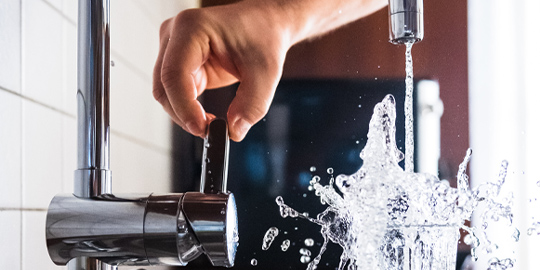Updated PFAS values to strengthen approach to drinking water safety

Australia’s peak health and medical research body has revised national standards for PFAS in drinking water, marking a significant step in the country’s ongoing effort to safeguard public health through robust, science-based regulation.
The National Health and Medical Research Council (NHMRC) has published updated health-based guideline values for per- and polyfluoroalkyl substances (PFAS) in the Australian Drinking Water Guidelines, following a comprehensive review of national and international evidence, and consultation with stakeholders across the water and health sectors.
The updated values are:
- perfluorooctane sulfonic acid (PFOS) – 8 nanograms per litre
- perfluorooctanoic acid (PFOA) – 200 nanograms per litre
- perfluorohexane sulfonic acid (PFHxS) – 30 nanograms per litre
- perfluorobutane sulfonic acid (PFBS) – 1000 nanograms per litre.
While most values remain unchanged from those proposed in NHMRC’s October 2024 draft, the PFOS value has been revised upwards – from 4 to 8 ng/L – following further modelling and expert review.
NHMRC CEO Professor Steve Wesselingh said: “These final guideline values, including the PFOS guideline value, have been reviewed and supported by our expert advisory committee, an independent expert review, jurisdictional public health experts including the Chief Health Officers, and have been supported by the Council of NHMRC,”.
PFAS values reflect lifetime risk
PFAS are human-made chemicals used to make products resistant to heat, stains, grease and water. Their widespread use over decades means most people have had some level of exposure in their lifetime. The updated values in the Guidelines are designed to minimise health risks from PFAS in drinking water over a lifetime of exposure.
“It is critical to note that the vast majority of our national water supply is below this guidance even though we’ve taken a conservative approach and used cautious assumptions in setting the updated PFAS values,” Wesselingh said.
“PFAS are widely present in many everyday items and drinking water is only one source for possible PFAS exposure, so higher values in drinking water for short periods is unlikely to increase health risks.”
The updated values replace the previous PFOS and PFHxS combined value of 70 ng/L, and represent a significantly more conservative risk threshold.
Consultation and testing
Since releasing the draft guideline values in October 2024, NHMRC has received widespread input from the sector, prompting many water suppliers to proactively test their sources and reassure their communities.
“This work has been informed by a rigorous evidence review supported by independent expert review, targeted and public consultations, and we are grateful for the valuable input received through public consultation last year,” Wesselingh said.
The PFAS guideline values were finalised following a second round of expert review and targeted consultation and are now part of the official Australian Drinking Water Guidelines.
“NHMRC is responsible for developing and updating the Australian Drinking Water Guidelines. These guidelines are used by state and territory health departments, drinking water regulators, local health authorities and water utilities to ensure the safety of drinking water throughout Australia,” Wesselingh said.
The updated PFAS values provide a clear and authoritative reference point as utilities and regulators continue to manage legacy contamination risks and reassure the community.
While public concern around PFAS exposure remains high in some regions, NHMRC has reiterated that current drinking water risks for the general population are low.
The Guidelines themselves are built on conservative assumptions, ensuring robust protection even where only limited evidence is available.


